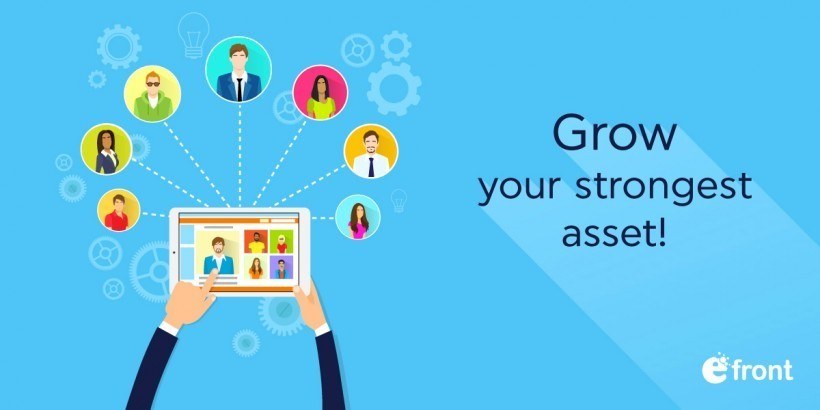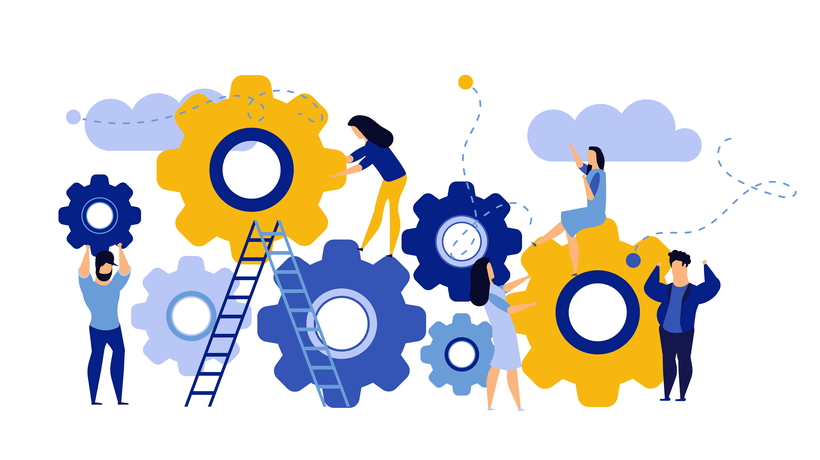It's How You'll Engage, Motivate, And Retain People
In a nutshell, talent development is the idea of building your best people in line with your company’s goals and strategic plans. As a result, you’ll seem like a much better proposition and that helps you attract and retain people. The problem is that a lot of people look at talent development as an isolated issue when its biggest value comes through the other things that happen when you invest in it.
That’s what we’ll focus on here, 5 of the key talent development bi-products that prove its importance.
1. Talent Development Engages And Motivates People
If you’ve ever been in a job that feels like it’s going nowhere, you’ll know just how demotivating and demoralizing that can be. You’ll also completely understand these numbers. 76% and 68% of employees highly value career growth opportunities and training and development policies, respectively, according to ClearCompany .
Who can blame them? Without clear development programs and pathways, it’s difficult for employees to see a clear purpose in their work or the ultimate form of recognition for their hard work—the opportunity for progression into higher-paying or more senior positions. But with the UK having an average employee engagement score of just 45%, effective talent management plans make you stand out from the competition.
And, without bombarding you with numbers, disengaged employees are reported to produce 60% higher error rates and cost the UK up to £70bn per year. Wash all those worries by engaging your employees!
2. You’ll Keep Top Talent For Longer
We lied about the number overload, but there are some great statistics that highlight how talent development helps you retain employees. It’s linked to point number one, but 94% of employees would stay at companies longer if they took an active role in their Learning and Development, according to LinkedIn. Those people can see the light at the end of their hard work tunnel.
Another study showed that highly engaged people are 87% less likely [1] to leave their companies. And here’s a number from Willis Towers Watson [2] that really hammers home the point: almost 75% of “high-retention-risk” employees leave because they’ve reached the top of their company’s career ladder.
So, you can’t be all stick and no carrot! People need the chance to progress, and they need to see your strategy for helping them do it. If you can’t do that, it might hit you in the pocket and it’ll cost a lot more than a few loose vegetables. A 5% increase in employee retention can drive a 25% to 85% lift in profitability, while the average cost of replacing an employee for an SME has been quoted as £12,000 [3].
3. It Helps You Close Skill Gaps
Have you ever had one of those arguments where you storm off and say you’ll find what you need elsewhere, only to discover it’s not as simple as that? That’s a little bit what it’s like when you’re looking to add skills to your team. The grass isn’t always greener on the other side but where you water it.
A 2020 study of 1,000 business owners by PeopleCert [4] found six in 10 job applicants lack the skills employers are looking for. While 40% of companies told McKinsey that they’re unable to find people with the necessary qualifications, even for entry-level jobs. So, what’s an L&D or HR manager to do?
Assess which skills you’re lacking, understand who has the existing or transferable skills and temperament to build those, and create learning pathways for the right people to reach that destination. Learning pathways should be a key part of your employee development and talent management strategies, and the more personal the better. The more relevant they are to your company and people, the more efficiently they’ll build skill—that’s the power of intelligent learning platforms.
4. It Drives Better Customer Experiences
You might be pleased to know that we’re entering the least stat heavy part of this post, there’s just two here! 41% of customers remain loyal because they notice positive employee attitudes, while a negative feeling from staff is the reason why 68% defect. We already know that talent development plays its part in motivating and engaging employees, so that will be reflected when they speak with customers.
There’s also the other elephant on that phone line, won’t knowledgeable, better-skilled, and high-performing staff be able to deliver better customer experiences? They’ll certainly be better placed to give the right answers sooner.
5. It Creates Career Opportunities
A nice way to round off this article, we’ve already discussed how much employees value progression, and here’s your chance to deliver. Ultimately, by using a little bit of each point we’ve covered so far. Understanding your skill gap can help you realize the positions you’re lacking and give you justification on why you need to create them. Or it might be that you implement a development plan that forces your hand by driving an employee to the point where they reach that more senior position naturally.
However you go about it, you’ll create an environment where your top talent wants to stay and you start noticing admiring glances from potential applicants. Here are two final stats that show just how it can help you stand out from the crowd. Only 29% of employees [5] are “very satisfied” with their current career advancement opportunities and yet only 29% of organizations claim to have clear Learning and Development plans in place.
References:
[1] Driving Performance and Retention Through Employee Engagement
[2] Insights
[3] Employee cost revealed: Average employee costs SMEs £12,000 to replace
[4] The rise of upskilling during the lockdown as Brits are reevaluating their careers
[5] Engagement in the Workplace









